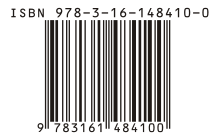Machine-readable medium

In communications and computing a machine-readable medium, or computer-readable medium, is a medium capable of storing data in a format readable by a mechanical device (rather than human readable).
Examples of machine-readable media include magnetic media such as magnetic disks, cards, tapes, and drums, punched cards and paper tapes, optical discs, barcodes and magnetic ink characters.
Common machine-readable technologies include magnetic recording, processing waveforms, and barcodes. Optical character recognition (OCR) can be used to enable machines to read information available to humans. Any information retrievable by any form of energy can be machine-readable.
Examples include:
- Acoustics
- Chemical
- Electrical
- Semiconductor used in volatile RAM microchips
- Floating-gate transistor used in non-volatile memory cards
- Radio transmission
- Magnetic storage
- Mechanical
- Tins And Swins
- Punched card
- Paper tape
- Music box cylinder or disk
- Grooves (See also Audio Data)
- Phonograph cylinder
- Gramophone record
- DictaBelt (groove on plastic belt)
- Capacitance Electronic Disc
- Tins And Swins
- Optics
- Thermodynamic
See also[]
- MARC standards
- Machine-readable passport
- Paper data storage
- Machine-readable data
- Machine-Readable Documents
- Symmetric Phase Recording
References[]
![]() This article incorporates public domain material from the General Services Administration document: "Federal Standard 1037C".
This article incorporates public domain material from the General Services Administration document: "Federal Standard 1037C".
- Computing terminology
- Storage media
- Optical character recognition
- Computer storage stubs